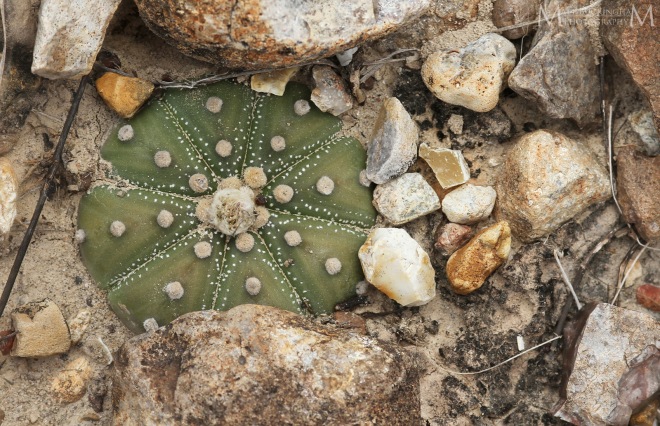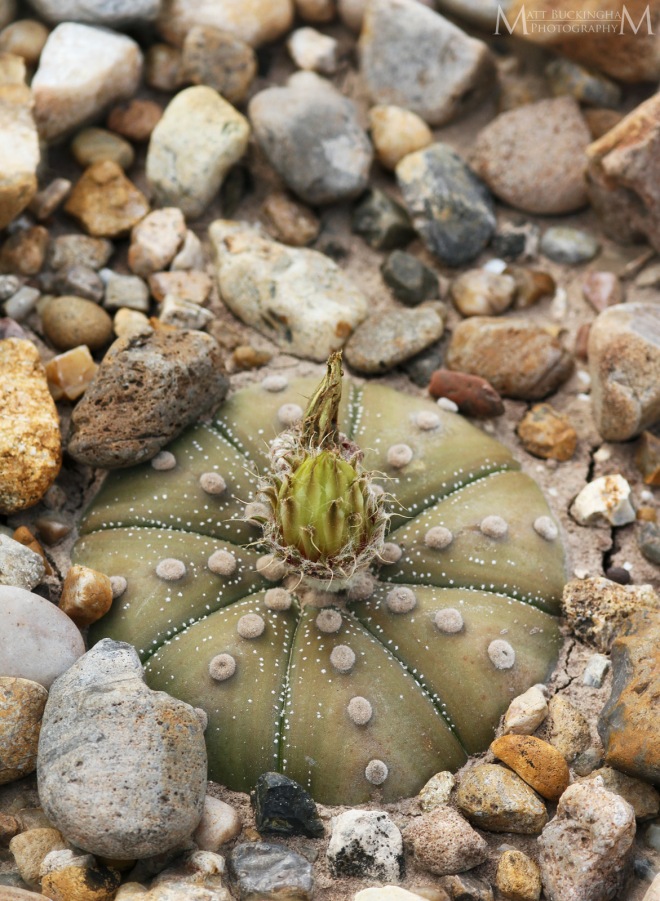
It was of the utmost importance that we keep our eyes firmly fixed on the ground – scanning among the stones and parched earth. Important, because we were in the realm of the Star Cactus (Astrophytum asterias), a very rare, Federally Endangered cactus of the Tamaulipan Thornscrub. The plants themselves are often flush with the ground, look like little more than some stone or anomaly in the soil. Their flowers, however, announce their presence to the world in spectacular fashion. Carolina and I had looked for the Star Cactus in 2017 during a trip with my family. While we found several plants, we did not have the good fortune to find them in bloom. This year, however, would be different.
This year we were visiting with our good friends James and Erin Childress. Having developed a search image during our previous trip, I began noticing a few plants scattered about. My attention was soon diverted, however, when James and I spotted the brilliant magenta blooms of a group of Fitch’s Hedgehog Cactus. It was in that moment, as we admired a very different cactus, that Carolina called out that she had found one in flower. Barely able to contain my excitement, I rushed to her. It soon become evident that we had timed this visit perfectly, as the floor of the Tamaulipan Thornscrub before me was decorated with dozens of bright yellow and orange blooms.

Though few known populations exist, where it does occur the Star Cactus can be quite abundant. Today most of the state’s populations are protected and some are thriving. We would be telling a very different story, however, if it weren’t for The Nature Conservancy in Texas. Through the acquisition of land and partnerships with private landowners, The Nature Conservancy has ensured that Astrophytum asterias will not disappear from our state’s diverse flora. In all, the Nature Conservancy through their Las Estrellas Conservation Cooperative has been able to protect over 2,500 acres of Star Cactus habitat, providing safe refuge for thousands of individuals.
Though it is promising, these successes do not mean that the Star Cactus does not still face threats to its existence. While speaking with Sonia Najera, Grasslands Program Manager of the Nature Conservancy in Texas, she informed me that continued development adjacent to protected land is threatening A. asterias populations that have no protection. A. asterias is also under threat from poachers who may collect plants for its popularity in cultivation, and for its resemblance to Peyote, which is extensively collected for its psychoactive properties.

Despite the many threats that they face, I am optimistic for the future of the Star Cactus in Texas, thanks in large part to the Nature Conservancy and dedicated professionals like Sonia.
The day we spent among Las Estrellas in bloom was really the experience of a lifetime. We observed and photographed so many spectacular plants in bloom that it was nearly impossible trying to narrow them down to decide what to post. Below is a small selection of favorites from an unforgettable day in the field.






















